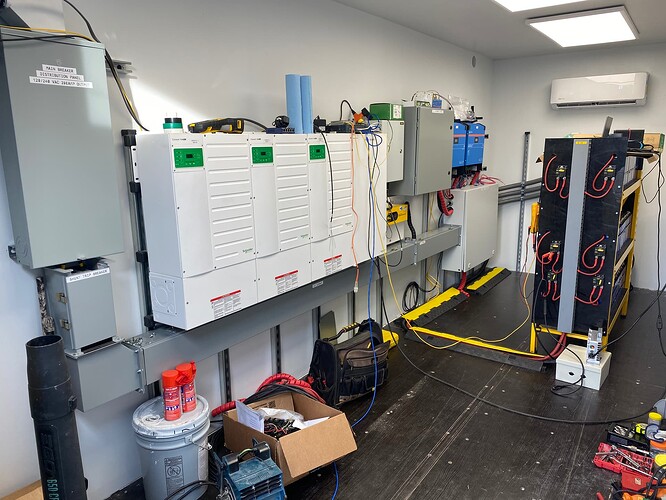James, thank you for restoring my question and responding.
As I mentioned in my last reply, the charging response in most inverters is slow enough that we can’t really control current dynamically.
There are other systems and software that can though, is this a hardware limitation? *
GitHub - Louisvdw/dbus-serialbattery: Battery Monitor driver for serial battery in VenusOS GX systems this is software that can do just that, it installs on the Victron system and listens to values published on the d-bus and will write new values accordingly. I have first had experience with this and if an active system with a dynamic load has the load change then it will alter the CCV of the Victron DVCC to match. For example, if I tell the software that at 99% SOC I want the charging current to be 1A and my load is 10A then CCV will be set to 11A if that load suddenly changes to 45A then the value will be changed to 46A so the overall affect is that the charging rate is 1A. Is it more of a philosophy approach that you’re taking that precludes you from using this method? Victron has made their protocol open to manufactures for a while and there is no reason with the proper serial connection you couldn’t do the same thing. Even the cheapest JBD/JKBMS mossfet BMSs from China are starting to come with this ability…
Generally, inverters can be configured in a few different modes depending on your strategy. Victron is no exception here, ESS settings can have quite an effect on how the system behaves.
I’m not using ESS and I don’t have a gird connected system, this doesn’t apply to me.
Could you share more about how DVT fell short for you? Can you email us your serial number so we can take a look at your config and check nothing is amiss?
The new DVT system does work but it’s not what I need. It still won’t allow me to charge the last 1-5% at a low current value.
Keep in mind that if we ask for 10A, the loads are 10A, and solar is capable of generating, say, 30A, Don’t you think it is the inverter’s job to do the maths and modulate solar respectively? It’s the only one that knows all 3 values.
Honestly, no. I feel that way of thinking is outdated. Especially when dealing with Victron… when you are using their system and have DVCC enabled the VenusOS device becomes the “brains” and it is aware of all the needed values and allows the BMS to alter them. If you’re goal is have a Victron integrated device then you should adopt the philosophy of Victron and fully embrace their methods, which would allow the BMS to set charging values based on real time data… it’s how their very expensive BMS works… I mean what’s the point in having a “smart” BMS if it doesn’t do smart things?
I really do want the Batrium system to work, I believe your hardware design is superior to all others but the software design, implantation, and approach is frustrating as an end user. I don’t mean to be negative or anything and I do apologize if my frustration is coming out but I feel it’s important for anyone doing research to know the limitations of the product. When I first did my research and I read about the Victron integration I wrongfully assumed it was actually integrated and not just a follower device that listens for critical messages to respond to. If anything comes out of this conversation perhaps updating the wiki on your site to the limitations that the Victron integration has.
Thanks again for your response.
